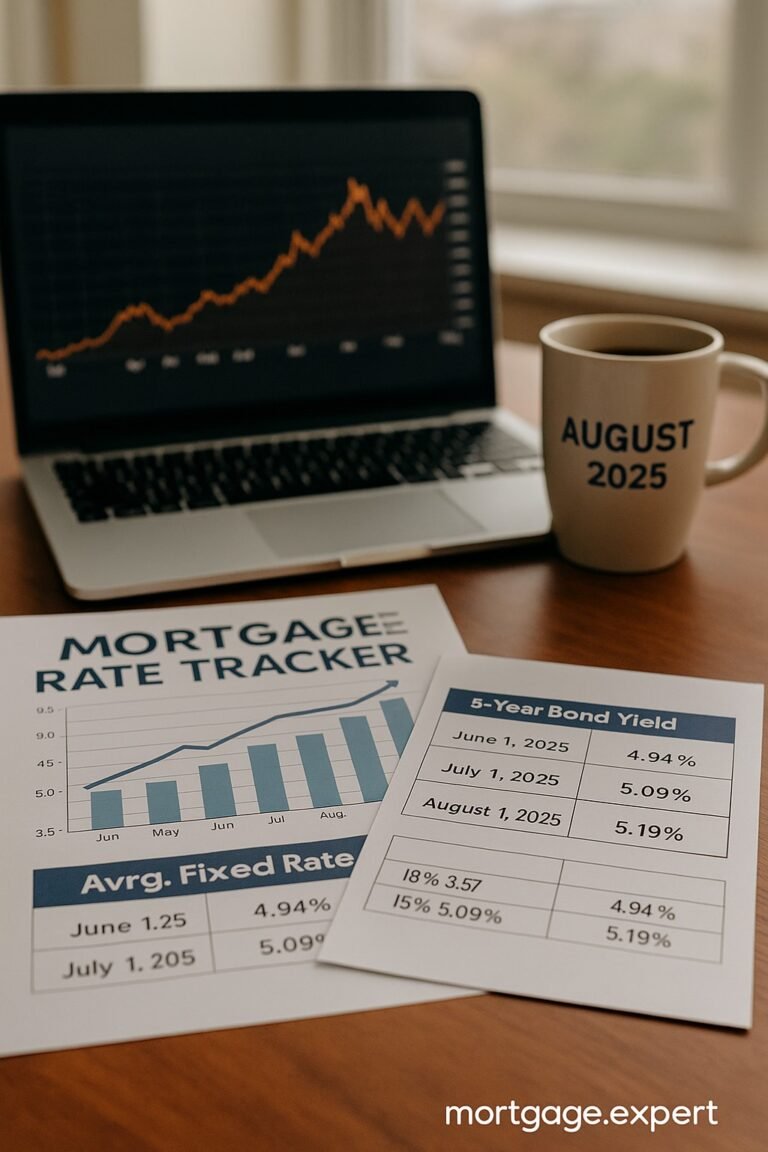
Mortgage Trigger Rate in Canada: What It Is, When It Hits, and What To Do in 2025
You’ve taken a variable-rate mortgage because the initial rate was low and things felt affordable. But suddenly, you get an email from your lender. It’s about something called a ‘trigger rate.’
Your payments haven’t changed, but your balance is barely going down. You might even owe more than you did before. Now what?
Welcome to the world of trigger rates. In this 2025 guide, we’ll explain what they are, when they hit, and what you can do to stay in control of your mortgage.
What is a Mortgage Trigger Rate?
A mortgage trigger rate is the interest rate level at which your regular monthly payment is no longer enough to cover the interest on your mortgage.
This mainly applies to variable-rate mortgages with fixed monthly payments. As interest rates rise, more of your payment goes toward interest and less toward your principal.
At a certain point — the trigger rate — your payment only covers the interest. If rates go up any further, you’re not even paying down the loan anymore.
⚠️ Principal vs Interest: Before and After the Trigger Rate
When interest rates rise and your payment stays fixed, you may hit the trigger rate — the point where your payment no longer covers the interest. Here’s how the breakdown changes:
✅ Before Hitting Trigger Rate
- 💰 Monthly Payment: $2,200
- 🔹 Interest Portion: ~$1,500
- 🔹 Principal Portion: ~$700
- 🏠 Loan balance decreases steadily
🚨 After Hitting Trigger Rate
- 💰 Monthly Payment: $2,200 (unchanged)
- 🔸 Interest Portion: ~$2,200+
- 🔸 Principal Portion: $0
- 📈 Loan balance starts growing (negative amortization)
What’s the Difference Between Trigger Rate and Trigger Point?
Let’s break it down simply:
–Trigger Rate: The specific interest rate where your mortgage payment stops reducing your loan balance.
– Trigger Point: The point where your mortgage balance starts growing (because your fixed payment doesn’t even cover the interest anymore).
Think of the trigger rate as the warning light — and the trigger point as the real emergency.
Once you cross the trigger point, your lender will step in and force a change to your payment setup.
How the Trigger Rate is Calculated in 2025
Trigger rate isn’t one-size-fits-all — it depends on your mortgage size, rate, amortization period, and how far you are into the term.
But generally, the formula is something like:
Trigger Rate ≈ (Current Mortgage Payment ÷ Loan Balance) x 12**
It varies by lender, but most major banks like RBC, TD, or Scotiabank will notify you once you’re close.
📉 What Is Your Trigger Rate?
Your trigger rate is the point where your entire fixed mortgage payment only covers interest — and no principal. If rates go higher, your loan balance starts growing. Here’s how it’s calculated and what it might look like:
📐 Trigger Rate Formula
Trigger Rate (%) = (Monthly Payment × 12) ÷ Loan Amount
Example: $2,250 monthly × 12 ÷ $500,000 = 5.4%
This means that if your interest rate hits 5.4%, your entire payment goes toward interest and none to principal.
| Fixed Monthly Payment | Annualized ($) | Trigger Rate (%) |
|---|---|---|
| $2,000 | $24,000 | 4.80% |
| $2,250 | $27,000 | 5.40% |
| $2,500 | $30,000 | 6.00% |
| $2,750 | $33,000 | 6.60% |
Real-Life Example: Rachel & Mark Hit Their Trigger Point
Rachel and Mark bought a home in Mississauga in early 2022. Their $600,000 mortgage had a 1.65% variable rate and a fixed monthly payment of $2,350.
Fast forward to 2025 — rates have climbed to 5.4%. Even though their payment didn’t change, it’s no longer enough to cover the interest. Their principal is now growing instead of shrinking.
Their lender sends a letter: they’ve hit their trigger point. They’re given 3 choices:
– Increase their monthly payment
– Make a lump-sum payment
– Convert to a fixed-rate mortgage
This is the reality many Canadians are facing as variable-rate mortgages meet rising interest rates.
What Happens When You Hit the Trigger Rate?
When you hit the trigger rate, the bank usually won’t act immediately. But if interest rates keep rising and you reach the trigger point, you’ll be required to take action.
Options typically include:
– Increasing your monthly payments
– Making a lump-sum payment to reduce the balance
– Renegotiating the mortgage (possibly switching to a fixed rate)
If you ignore it, the lender may force a reset that could surprise your monthly budget.
Can You Avoid Hitting the Trigger Rate?
Yes — with proactive steps.
Some strategies include:
– Making regular lump-sum payments to reduce principal
– Voluntarily increasing monthly payments above the minimum
– Watching your lender’s communication closely
– Switching to a fixed-rate term if you think rates will rise further
The earlier you act, the more control you keep.
Trigger Rate vs Adjustable-Rate Mortgages
Let’s be clear: not all variable-rate mortgages are the same.
–Fixed-payment variable-rate mortgages keep your monthly payment steady, but expose you to trigger rates.
– Adjustable-rate mortgages (ARMs) adjust your payment every time the prime rate moves, so there’s no trigger — just fluctuation.
If you’re worried about surprise shocks, an ARM might give you more clarity, even though it means higher payment volatility.
Final Thoughts: Stay Ahead of the Curve
Trigger rates sound scary, but they’re just warning signs that your mortgage isn’t working as originally planned.
If you understand the concept and monitor your lender’s notices, you can avoid panic. Talk to your mortgage broker, stay in touch with your lender, and revisit your payment structure if needed.
The earlier you act, the more options you have — and the more control you keep over your financial journey.
💡 Understand the Mortgage Trigger Rate Impact
Are you worried about your mortgage payments as rates rise? Find out exactly what the trigger rate means for your payments and what actions you should take now to protect your finances. Learn How to Manage Your Mortgage Trigger Rate
Stuck with a Mortgage Decision?
Don’t stress — our team is here to help. Reach out for free, no-obligation guidance.
Contact the Experts



